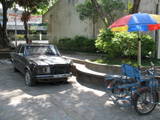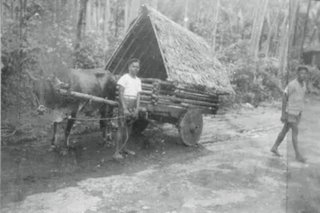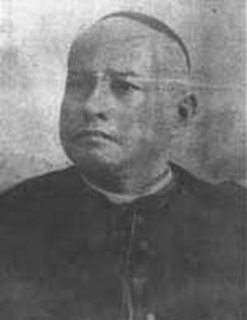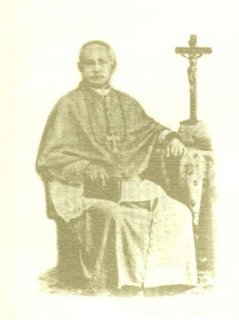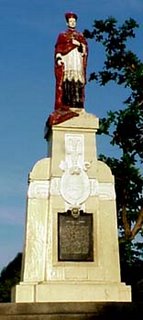Baaoeño Heroes
Bonifacio Day brings our mind back to our heroes specially those we were made familiar with in school. Many Baaoeños though do not realize that our town has it lists of heroes too. Many among our compatriots are men who risked or sacrificed their lives in the pursuit of an ideal like liberty and freedom. Some of them simply exemplified greatness in their fields and taught others the capacity of the Filipino race. This is the heroism of Jorge Barlin when he broke the glass ceiling imposed by foreigners on our race. So too would Luis G. Dato do in his skill in the borrowed English language. Unlike Barlin and Dato though, more like Bonifacio, are Baaoeños who are heroes dying with clenched teeth and spilling blood in defiance of an enemy. I will not distinguish heroes from martyrs or victims because in the end, we will always remember their pointless death especially in war. My list of Baaoeño Heroes is still incomplete but it goes way back into history:
1. The ancient Baaoeño warriors who fought the Spanish in the 16th century (according to Fray Gaspar de San Agustin)
2. The Baaoeños led by the Mesia Brothers who fought neighboring Nabua in the Baao-Nabua boundary dispute in the 19th century.
3. Bishop Jorge I. Barlin
4. The Baaoeño Principalia who were arrested in suspicion of conspiracy in the Philippine Revolution.
5. The Baaoeño officers and soldiers under Gen. Ludovico Arejola who fought the Americans in the Battle of Agdangan and elsewhere.
6. Luis G. Dato, known in Philippine Literature as one of the earliest Romantic Filipino poet in English
7. The innocents of the Agdangan Massacre.
8. Eusebio Dato, Baao’s Chief of Police under the Japanese who was found clandestinely aiding the Guerillas. He was arrested, tried and executed at Colgante Bridge, Naga City. There was once a proposal in the City government to rename the bridge in his honor.
9. Dr. Dominador D.Uybarreta, young wartime doctor of Baao whose unselfishness to aid the sick and wounded earned him the suspicion of the Japanese. He was tortured and executed somewhere in Pili.
10. The soldiers from Baao and various guerilla outfits formed in Baao which would harass the Japanese during the war.
There will be other heroes and I will continue the list.
Bonifacio Day brings our mind back to our heroes specially those we were made familiar with in school. Many Baaoeños though do not realize that our town has it lists of heroes too. Many among our compatriots are men who risked or sacrificed their lives in the pursuit of an ideal like liberty and freedom. Some of them simply exemplified greatness in their fields and taught others the capacity of the Filipino race. This is the heroism of Jorge Barlin when he broke the glass ceiling imposed by foreigners on our race. So too would Luis G. Dato do in his skill in the borrowed English language. Unlike Barlin and Dato though, more like Bonifacio, are Baaoeños who are heroes dying with clenched teeth and spilling blood in defiance of an enemy. I will not distinguish heroes from martyrs or victims because in the end, we will always remember their pointless death especially in war. My list of Baaoeño Heroes is still incomplete but it goes way back into history:
1. The ancient Baaoeño warriors who fought the Spanish in the 16th century (according to Fray Gaspar de San Agustin)
2. The Baaoeños led by the Mesia Brothers who fought neighboring Nabua in the Baao-Nabua boundary dispute in the 19th century.
3. Bishop Jorge I. Barlin
4. The Baaoeño Principalia who were arrested in suspicion of conspiracy in the Philippine Revolution.
5. The Baaoeño officers and soldiers under Gen. Ludovico Arejola who fought the Americans in the Battle of Agdangan and elsewhere.
6. Luis G. Dato, known in Philippine Literature as one of the earliest Romantic Filipino poet in English
7. The innocents of the Agdangan Massacre.
8. Eusebio Dato, Baao’s Chief of Police under the Japanese who was found clandestinely aiding the Guerillas. He was arrested, tried and executed at Colgante Bridge, Naga City. There was once a proposal in the City government to rename the bridge in his honor.
9. Dr. Dominador D.Uybarreta, young wartime doctor of Baao whose unselfishness to aid the sick and wounded earned him the suspicion of the Japanese. He was tortured and executed somewhere in Pili.
10. The soldiers from Baao and various guerilla outfits formed in Baao which would harass the Japanese during the war.
There will be other heroes and I will continue the list.



